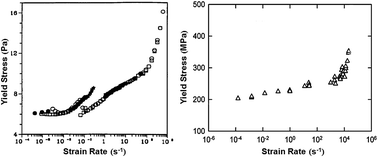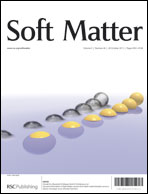Analogy between glass rheology and crystal plasticity: yielding at high strain rate
Abstract
An abrupt increase of the yield stress at sufficiently high strain rate, seen in glassy as well as crystalline structures, signifies a transition from classical thermal fluctuation to stress activated processes. For crystals this behavior has been recently explained using transition-state-theory with a stress-dependent activation barrier for dislocation glide. An equivalent approach, developed independently for amorphous solids, suggests the physical basis of the upturn behavior of the yield stress is more general. Insights into the interplay between thermal and stress


 Please wait while we load your content...
Please wait while we load your content...